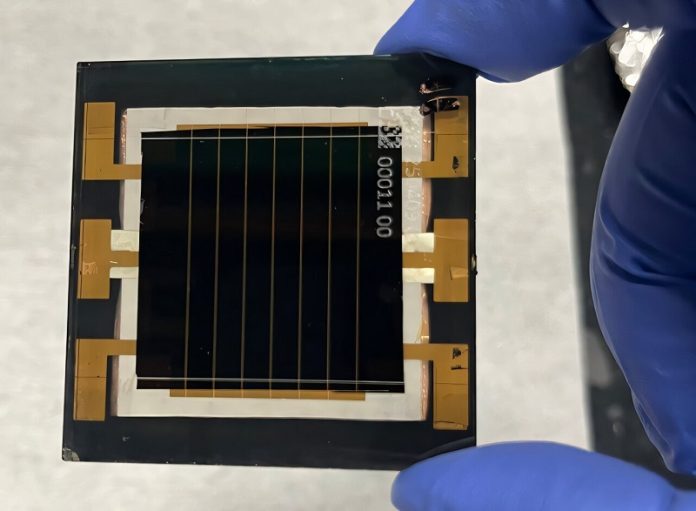
A new partnership between researchers at the National Renewable Energy Laboratory (NREL) and a Boston-area company, CubicPV, has set a U.S. record for perovskite solar technology.
The team developed a small solar module, known as a minimodule, that achieved a certified efficiency of 24.0%.
This is the highest performance ever recorded for a perovskite minimodule built through a U.S.-based effort.
The achievement is the result of close collaboration between the two teams. Both NREL and CubicPV contributed different parts of the fabrication process, combining their areas of expertise.
According to Kai Zhu, a senior scientist at NREL, this collaboration was key to their success.
“Both teams can achieve great results,” Zhu said, “but collaboration amplifies our impact and sets new device benchmarks.”
CubicPV specializes in tandem solar devices, which stack two different materials—perovskite on top and silicon below—to capture more sunlight and convert it into electricity.
NREL, meanwhile, has been working to improve how these devices are made, making them more durable and more efficient at a larger scale.
Unlike traditional silicon solar panels, which require high temperatures to manufacture, perovskites can be made using much gentler methods.
These include low-temperature printing and vacuum coating processes that use materials more abundant on Earth. This makes perovskites cheaper to produce and opens the door to more sustainable and scalable solar energy options.
Perovskite technology has already shown strong results in small-scale tests. The next step is making these materials work well in larger panels that can survive the outdoors for many years. That’s where this new 24.0% efficiency milestone becomes especially exciting. It shows that perovskite technology is steadily moving closer to commercial viability.
Adam Lorenz, chief technology officer at CubicPV, said the next phase of development will focus on outdoor testing and building even larger solar modules.
“We are committed to leveraging U.S. technical leadership and collaborating with the top researchers in the world,” he said, “to drive cutting-edge perovskite science toward scalable, commercially viable, and durable products.”
The previous record for perovskite minimodule efficiency was 23.9%, set earlier in 2025. Solar efficiency records are reviewed and published twice a year in the journal Progress in Photovoltaics.
With more time before the next update later this year, the NREL and CubicPV team hopes to break their own record again soon.
This milestone is not just a technical achievement—it also represents progress toward making clean, affordable energy available on a larger scale, while helping diversify the materials and methods used in solar panel production.



